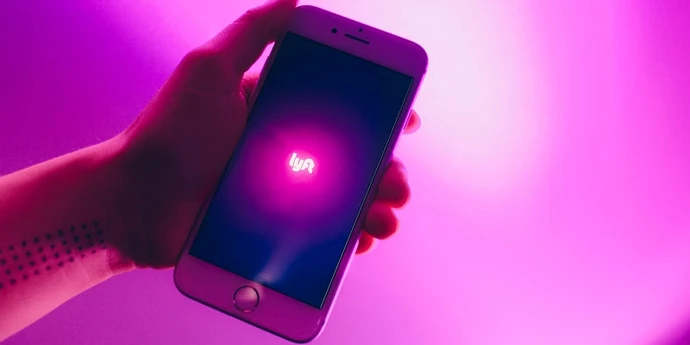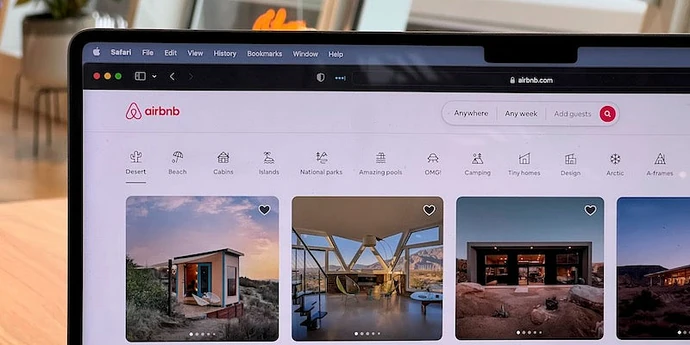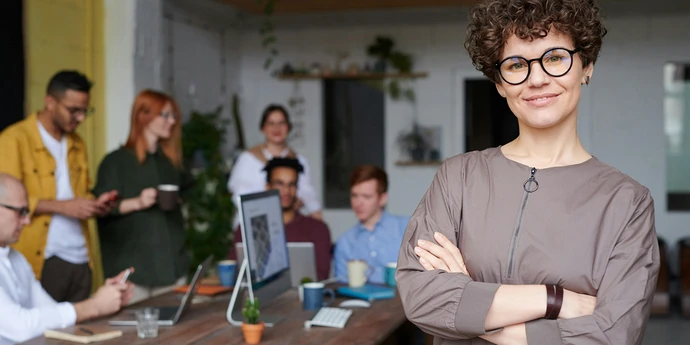Prioritization and trade-off questions are common in interviews at tech companies like Facebook, Google, Amazon, etc. Your interviewers will want to know how you prioritize as a product manager or product owner.
For instance, your interviewer might ask, "if you were the PM for Facebook Live, what features would you prioritize?"
These questions can be tricky to approach at first. But the good news is that if you know how to break them down, they can become fairly easy to answer. So, let's step through our suggested technique for answering prioritization interview questions as well as an example to help you prepare for your interview.
Here’s an overview of what we will cover:
- What are prioritization and trade-off questions?
- How to answer prioritization questions
- Example prioritization question with answer
- List of practice questions (from Facebook, Google, Amazon, etc.)
- How to practice prioritization and trade-off questions
Click here to practice 1-on-1 with FAANG ex-interviewers
1. What are prioritization and trade-off questions?
These terms often get used interchangeably when people talk about PM interviews, so we’ll start by clarifying what we mean by prioritization and trade-off.
Analyzing trade-offs is key to the decision-making process for PMs, and so questions that involve some consideration of trade-offs will come up throughout the interview process. You must be able to identify the downsides of your choices, and why they are outweighed by the advantages. For example, when answering metric definition questions, one aspect of your answer will be examining the weaknesses of your chosen metrics, or, for product strategy questions, the disadvantages of your solution.
Meanwhile, prioritization questions specifically center on trade-offs, frequently involving product features. For example: “You are the PM for Instagram posts — what features should we prioritize next?” Questions like this test how well candidates can identify customer needs when it comes to picking the most important features and/or building out a product roadmap.
They’re all about trade-offs, hence why they are called trade-off questions in some interview formats, such as in the the Facebook PM execution interview. For the purposes of this article, we'll be referring to them as prioritization questions.
1.1 Why interviewers ask prioritization questions in PM interviews
Employers use prioritization/trade-off questions to evaluate candidates’ critical thinking and communication skills. There are many different features a PM could prioritize on a given product, as well as different conclusions as to which projects are the most impactful. So your interviewers will want you to single out your highest priorities using a process that includes a thorough investigation of the factors and trade-offs involved.
Let’s take a look at how to do that.
2. How to answer prioritization questions
A common mistake candidates make when answering prioritization questions is to provide an unstructured answer. In this next section, we’ll walk through a step-by-step approach you can use to avoid that pitfall.
Here are the steps we suggest you take when answering a prioritization question:
- Define the business objective
- Apply a prioritization framework (we recommend Intercom’s RICE framework)
- Re-evaluate and consider trade-offs
We’ll break down these steps with an example answer in section 3, but first let’s investigate the RICE framework.
2.1 The RICE framework
PMs are responsible for setting the product vision and the roadmap to deliver that vision. This entails difficult decisions around quantifying the importance of different initiatives and lining up the order at which they’ll be handled.
It helps to assign specific, measurable scores to your different options, in order to lessen inherent bias when making your choice of what to prioritize. That’s why we recommend using the RICE framework to structure your answers. The RICE framework includes a simple formula that allows you to give a value to the features, projects, or products you’re considering, in order to make a more informed decision.
It takes the following factors into account:
- Reach : how many customers this product or feature will affect in a given time period
- Impact : the degree to which this product or feature will contribute to your goal
- Confidence : how sure you are about the values you’ve chosen in this calculation
- Effort : the overall time your team will invest in the project
To determine the RICE score, you assign a value to each of these factors, find the product of Reach, Impact, and Confidence, then divide that number by Effort.
The RICE formula looks like this: (Reach x Impact x Confidence) / Effort.
Let’s break this process down into its components.
2.1.1 RICE framework: Reach
For each of these components, the value you assign to it will vary according to the goals and parameters of the product you’re working on. When determining Reach, you want to have an idea of the number of people that your initiative will affect. To find this, you could measure customers in a quarter, transactions in a month, site visitors in a year, etc.
For example, if you want to find the Reach value for updating an in-app messaging feature, you could use the number of users who sent messages in the last quarter. Take a look at section 3 for a full breakdown of the RICE framework used to answer an interview question.
2.1.2 RICE framework: Impact
The exact impact that a product or feature will have on a consumer is difficult to predict precisely. So instead of coming up with a specific number as you would in finding Reach, choose from a multiple-choice scale for Impact. Here is how you could set your scale:
- 3: huge impact
- 2: high impact
- 1: medium impact
- 0.5: low impact
- 0.25: minimal impact
From the example we mentioned above: updating an in-app messaging feature would have a huge impact on the users of a product such as WhatsApp, an instant messaging platform. In this case, the Impact score would be 3. On the other hand, if you’re working on a photo-editing app in which fewer users use the messaging feature, the Impact score would go down to 1 or potentially 0.5.
2.1.3 RICE framework: Confidence
The confidence value is designed to help remove bias and cut through blind enthusiasm. Here, you assign a percentage of confidence to the values you chose for Reach, Impact, and Effort. As Confidence is measured as a percentage, you could theoretically choose between 100 options for this value. Instead, to speed up the process, treat this as a multiple choice option as well:
- 100% : high confidence
- 80% : medium confidence
- 50% : low confidence
- <50% : zero confidence / complete guess
For example, if you have reliable user analytics to inform your Reach value, thorough user research to define Impact, and feedback from the engineering team on Effort, then you’re working with 100% Confidence. If you’ve only got data to back up two out of three of these values, then it’s only at 80% Confidence. Of course, if you’re making educated guesses for Reach, Impact, and Effort, then your Confidence score is at 50% or less.
2.1.4 RICE framework: Effort
Finally, once you’ve determined and multiplied the three previous values; Reach, Impact, and Confidence; you divide this number by Effort. To find Effort, you must consider the total amount of time this product or feature will take, from planning to implementation and testing. This means taking into account the work from every branch of your team, including product, design, and engineering.
Effort is measured in “person-months,” or the work that one team member can do in a month. For example, Project X takes one person two months to complete, so it has an Effort score of two. Project Y takes two people one month to complete, so it also has an Effort score of two. Small projects may be better estimated in “person-weeks,” as long as you keep your measurement consistent across projects (e.g. they are all measured in “person-weeks” or in “person-months,” but not a mix of the two).
Of course, Effort will depend on a number of factors and is difficult to pinpoint exactly. So go for a rough estimate, and round everything up to a whole number. For the purposes of our example in Section 3, we’ll be measuring in person-months.
3. Example prioritization questions with answers
Now that you know how to approach prioritization questions, let’s look at a couple of examples.
3.1 Video example
Watch this mock video to see Damien (ex-Facebook PM) use the RICE framework to answer the question "How would you prioritize WhatsApp features?"
3.2 Written example.
Now let's work through a written example.
Try this question:
If you have projects A, B, and C, how do you prioritize them?
Of course, in the interview you’ll have more specific details than “A, B, and C,” so for the purposes of this example we’ll say that the interviewer has given you this hypothetical situation: you’re the PM for a brand new photo-editing mobile app, with the following projects.
- Project A: update the in-app messaging system
- Project B: develop a corresponding desktop app
- Project C: add a crop tool to the editing suite
Step one: Define the business objective
First, you should start by making sure you understand the product properly and agree with your interviewer on specific user and business objectives. Agreeing on the goals upfront is extremely important because your priorities will change depending on what you’re trying to achieve with the product.
In this instance, given that we’ve been informed we’re the PM for a brand new mobile app, the current business objective could be to drive new user acquisition and engagement. Let’s assume that we’ve run this by the interviewer, and they’ve encouraged you to focus on user engagement.
Now that we know what we’re working toward, let’s apply a prioritization framework to our three options.
Step two: RICE Framework - Reach
First, we’ll determine the Reach for these three projects. For project A, the in-app messaging update, we know that every user who sent messages will be impacted by this change. Let’s say that the interviewer has given us some general numbers to work with, so we know that an average of 250 users have sent messages each month over the last quarter.
Project B (desktop app) will be more difficult to estimate, as we do not have any concrete numbers to back up how many users will take advantage of the desktop version. Let’s say that we’ve checked with our interviewer and have been informed that our early user base is around 700. Using a more conservative estimate, we guess that 50% of them will use the desktop app. That brings us to 350.
Finally, as project C is adding a cropping tool to the free category of our full editing suite, we can count the number of users who may implement it. It's a simple, commonly used tool, so we can assume the majority of users will use it, so we’ll round the Reach number to 600 .
So here is our breakdown for Reach:
Project A: 250
Project B: 350
Project C: 600
Step three: RICE framework - Impact
For project A (messaging update), let’s say that the interviewer has informed us that users who send messages appear to do so sporadically. They use it to share edited photos with friends who also use the app, something that users are already able to do through the share feature. So, as users who do make use of the messaging system don’t engage with it heavily, let’s say the impact is low, giving us an Impact score of 0.5.
For project B (desktop app), this feature will have a huge impact on users who adopt the desktop version. Thus the Impact score is 3.
Finally, project C involves adding a simple cropping tool to the editing features that are available to all users. However, as it is a relatively small addition to the toolset, rather than a complete overhaul, we can assume the impact wouldn’t be “huge.” Let’s choose the “high” Impact score of 2.
So here is our breakdown for Impact:
Project A: 0.5
Project B: 3
Project C: 2
Step four: RICE framework - Confidence
Our Reach value for Project A (messaging update) is concrete and data-based, using the given number of users who send messages on the app. However, we are largely estimating Impact, as we do not yet have the data in the interview setting to back up those scores. We’ll give project A an 80% Confidence score.
We’ve been given less data on Project B (desktop app) versus project A, meaning we had to make estimations for Reach and Impact. So project B has a low, 50% Confidence score.
We do have a data-based value for Reach in Project C (cropping tool), but not for Impact. So project C will also have a Confidence score of 80%.
Here is our breakdown for Confidence:
Project A: 80%
Project B: 50%
Project C: 80%
Step five: RICE framework - Effort
Let’s say that there’s already a framework in place for the messaging update, so the timeline of Project A won’t take longer than one person-month. This will bring us to an Effort score of 1.
Project B, designing an entire desktop app, will require a much larger time investment from the whole team. Let’s imagine that you’ve worked on a similar project in your past experience, and that it took six person-months to complete. You should acknowledge to your interviewer that, of course, this is an imperfect comparison. But given the limited information you have in an interview setting, we’ll take this as an Effort score of 6.
For Project C (cropping tool), let’s say that the interviewer has told us that the team’s previous time investment for adding new editing features was three person-months. So we’ll give project C an Effort score of 3.
Here is our breakdown for Effort:
Project A: 1
Project B: 6
Project C: 3
Step six: Re-evaluate and consider trade-offs
When we take the four previous values and run them through the RICE formula for each project, here is what we find:
Project A: (250 x 0.5 x .80) / 1 = 100
Project B: (350 x 3 x .50) / 6 = 88
Project C: (600 x 2 x .80) / 3 = 320
So, if we only take the RICE score into account, we should prioritize Project C (cropping tool), then Project A (messaging update), and put Project B (desktop app) at the lowest priority. However, we know that estimations won’t be 100% accurate, especially given the limited information in an interview setting. Consider any other factors that should be taken into account, such as time-sensitive dependencies for other projects.
In this case, prioritizing the cropping tool makes sense, as the ability to crop photos in an editing app is a basic attribute that many users would expect to be able to access. The trade-offs to consider when prioritizing project C would be that offering a crop tool as a free feature may lead fewer users to upgrade to a paid account; however, it would be more risky to withhold the feature, for fear that users migrate to different apps.
As Project A (messaging update) and project B (desktop app) have similar RICE scores, this would be a good time to investigate whether there are any other reasons to prioritize one over the other. Let’s imagine that the interviewer mentioned that a desktop application was an early promise they made to stakeholders when initially launching the product. In this case, it would make more sense to prioritize Project B over Project A, despite the order of their RICE scores.
So, in this context, we should prioritize the projects in this order: C, then B, then A. However, there is no single correct answer for prioritization questions. You may come to a different conclusion than we did, or use a different framework such as the Kano model. The interviewer wants to see that you have a method to making choices and trade-offs, and that you’re considering the most relevant factors.
Now let’s jump into some example questions to help you practice.
4. List of practice questions (from Facebook, Google, Amazon, etc.)
Now that you’ve got a framework in mind, use it to practice some real interview questions that were asked in past interviews at big tech companies. Here is a list of prioritization questions from PM interviews at Facebook, Google, Amazon, and Lyft, according to data from Glassdoor and Blind.
Example prioritization interview questions
- Imagine you’re a PM at a startup that works with big data from the NHL — what’s the first product you would ship?
- How do you build a roadmap?
- How do you prioritize what to build?
- If you have projects A, B, C, how do you prioritize them?
- How do you prioritize in your current role?
- You are the PM for Facebook live — what features would you prioritize?
- You are the PM for Facebook pages — what features would you prioritize?
- You are the PM for Facebook posts — what reactions should we add next?
5. How to practice prioritization and trade-off questions
With a lot to cover, it’s best to take a systematic approach to make the most of your practice time.
Below you’ll find links to free resources and four introductory steps that you can take to prepare for prioritization questions.
5.1 Study the company you're applying to
Get acquainted with the company you’ve applied to. In many cases, the product questions you’ll be presented with will be based on real-life cases the company is facing. If you’re applying to a specific team, study up on their products, the user, etc.
Take the time to find out which products you’ll most likely be working with, based on the job description, and research them. Look up relevant press releases, product descriptions, product reviews, and other resources in order to discuss what’s most important to the role: the company’s product.
If you'd like to learn more about a specific company's PM interviews, then we'd encourage you to check out our guide for that company below :
- Google product manager interview guide
- Facebook product manager interview guide
- Amazon product manager interview guide
- Microsoft product manager interview guide
- LinkedIn product manager interview guide
- Uber product manager interview guide
- Stripe product manager interview guide
- Lyft product manager interview guide
- Apple product manager interview guide
- TikTok product manager interview guide
- Coinbase product manager interview guide
- Airbnb product manager interview guide
- DoorDash product manager interview guide
- Nvidia product manager interview guide
- Capital One product interview guide
- Netflix product manager interview guide
- Spotify product manager interview guide
5.2 Learn a consistent method for answering prioritization and trade-off questions
In this article, we’ve outlined a step-by-step method you can use to solve prioritization questions. We’d encourage you to first memorize the basic steps, and then try solving a couple of the sample questions on paper.
This will help you to understand the structure of a good answer. This is a good first step, BUT just knowing the method is not enough, as you also need to be able to apply the steps in interview conditions.
5.3 Practice with yourself or with peers
In our experience, practicing by yourself is a great way to prepare for PM interviews. You can ask and answer questions out loud, to help you get a feel for the different types of PM interview questions. Practicing by yourself will help you perfect your step-by-step approach for each question type. It also gives you time to correct your early mistakes.
You can find free practice questions on articles like this one or on YouTube.
If you have friends or peers who can do mock interviews with you, that's a great option too. This can be especially helpful if your friend has experience with PM interviews, or is at least familiar with the process.
5.4 Practice with experienced PM interviewers
Finally, you should also try to practice product manager mock interviews with expert ex-interviewers, as they’ll be able to give you much more accurate feedback than friends and peers.
If you know a Product Manager who can help you, that's fantastic! But for most of us, it's tough to find the right connections to make this happen. And it might also be difficult to practice multiple hours with that person unless you know them really well.
Here's the good news. We've already made the connections for you. We’ve created a coaching service where you can practice 1-on-1 with ex-interviewers from Google, Amazon, and other leading tech companies. Learn more and start scheduling sessions today.















